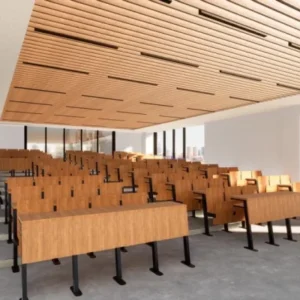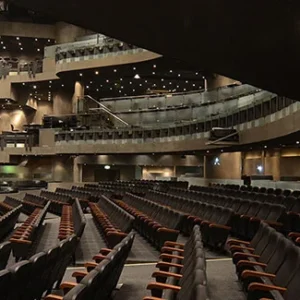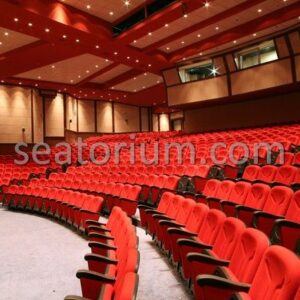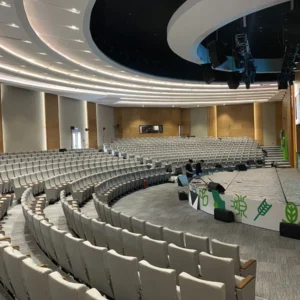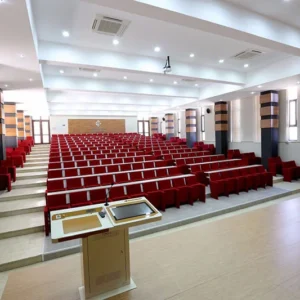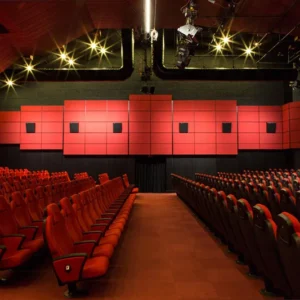In today’s world, where auditorium space management is more critical than ever, one seating innovation has started drawing considerable attention among industry professionals: folding auditorium seating. It’s not just a practical response to spatial constraints; it’s also a solution shaped by years of functional challenges and user feedback. So, what really makes folding seating systems an indispensable asset in modern auditoriums?
Let’s dive into the world of folding seating—not with generic promises, but with precise, experience-driven insights you’ll genuinely appreciate if you’re involved in design, purchasing, or decision-making for public venues.
Table of Contents
Folding Auditorium Seating: More Than Just Convenience
Folding auditorium seating has been evolving quietly in the background of public space design—but recently, it’s started taking center stage. These seating systems are specifically engineered to optimize flexibility in multi-use spaces like lecture halls, performing arts centers, and municipal auditoriums.
Engineers and architects across the globe are increasingly leaning towards folding systems because they maximize seating capacity without compromising utility. Whether you’re working with an older structure or a new build, folding systems integrate seamlessly with mechanical or manual retraction designs, enabling swift transitions between events.
Are folding seating systems only about space-saving?
Not quite. While spatial efficiency is a major draw, modern systems are offering far more—including advanced material technology, modular construction, and automated mechanisms that enhance operational fluidity.

Smart Integration with Collapsible Auditorium Chairs
When it comes to real-world installations, collapsible auditorium chairs shine due to their ability to function independently or within larger telescopic systems. These chairs are frequently chosen for their ability to disappear into architectural elements, offering a clean aesthetic (without ever calling it that) and practical functionality.
Key Engineering Considerations
- Understructure Systems: Today’s collapsible models often use pivoting steel or aluminum frameworks that have been fatigue-tested for thousands of cycles.
- Control Options: Hydraulic or motorized systems can streamline deployment in larger venues where speed and silence are vital.
- Mounting Methods: Side-wall or riser mount configurations influence maintenance access and cable management.
Do collapsible models support long-term use in high-traffic venues?
Absolutely. Durable folding seats designed for repeat public use can reach a lifecycle of 15–20 years with minimal upkeep when selected with wear-resistant upholstery and anti-corrosion metal finishes.
Retractable Auditorium Seating: Engineering Agility into Architecture
Retractable auditorium seating has redefined what it means to have a multifunctional hall. These systems use telescopic understructures, allowing entire seating blocks to retract either manually or via motorized tracks.
Practical Benefits in Project Management
- Pre-engineered modularity reduces on-site installation time and aligns with aggressive construction schedules.
- Integrated seat numbering and LED guidance streamline traffic flow in large venues.
- Customized riser heights and depths allow seamless adaptation to architectural geometry.
Have these systems proven efficient in cultural and civic centers?
Yes—and especially in venues hosting both performances and community events. When closed, they offer flat-floor utility; when opened, full audience capacity.
Foldable Auditorium Seats: Tailored for Functional Versatility
Among all the seating types, foldable auditorium seats offer the highest level of individual mobility. These are especially useful in venues requiring quick reconfiguration between presentations, exhibitions, or ceremonial setups.
Material Insights That Matter
- Injection-molded polymers for lightweight durability
- High-density foam cores with memory characteristics
- Anti-slip glides and floor-saving designs to reduce structural wear
What if seats need to be moved frequently without staff fatigue?
Then foldable systems with integrated trolleys or stackable profiles come into play—minimizing physical handling and maximizing safety.
Portable Auditorium Chairs: Flexibility Meets Function
Portable auditorium chairs have a unique place in this ecosystem. Unlike fixed or retractable options, they provide total freedom of layout, making them the go-to choice for multi-configuration venues like conference halls, religious facilities, or educational spaces.
Application Scenarios You Should Consider
- Temporary installations for high-attendance events
- Overflow seating that can be stored when not in use
- Exhibition halls where space definitions constantly shift
Do portable chairs compromise on design standards?
Not when chosen wisely. Many high-end manufacturers are now offering certified fire-retardant fabrics, UV-stable frames, and locking bases that meet even the strictest venue regulations.
Space-Saving Auditorium Seating: Rethinking Volume Without Sacrificing Presence
Every square meter in an auditorium counts—especially in urban projects. Space-saving auditorium seating provides a structural response to constraints like narrow rows, balcony curvature, or split-level flooring.
How Designers Optimize Space Without Compromise
- Slim-profile backrests that reclaim aisle room
- Shared-arm configurations that reduce chair-to-chair width
- Seat pan mechanisms that retract vertically to wall mountings
Can compact solutions still deliver comfort and longevity?
Yes, when paired with ergonomic curvature and tested motion mechanisms, compact systems perform remarkably in venues seating thousands.
Trends in Auditorium Furniture You Shouldn’t Ignore
The future of auditorium seating solutions is leaning towards automation, modularity, and sustainable materials. Stakeholders no longer view seating as a passive element but as a system that influences acoustics, crowd flow, and user experience.
Folding Chair Designs Leading the Way
- Magnetic locking systems for silent operation
- Memory return mechanisms to simplify post-event resets
- Aluminum composite frames balancing weight and strength
What are global clients prioritizing in tenders and RFPs?
Beyond certifications and specs, they’re asking for proof of lifecycle analysis, installation track records, and material sourcing transparency.
Final Thoughts: Why Folding Auditorium Seating Deserves Your Attention
Whether you’re working on a new build or a refurbishment project, folding auditorium seating can elevate not just the functionality of a venue, but also its revenue potential and user satisfaction. Professionals across theatre seating options, university halls, and civic centers are already tapping into this adaptive solution.
What’s next in folding seat materials?
Expect composite innovation, antibacterial fabrics, and carbon-neutral supply chains to dominate upcoming procurement cycles.

